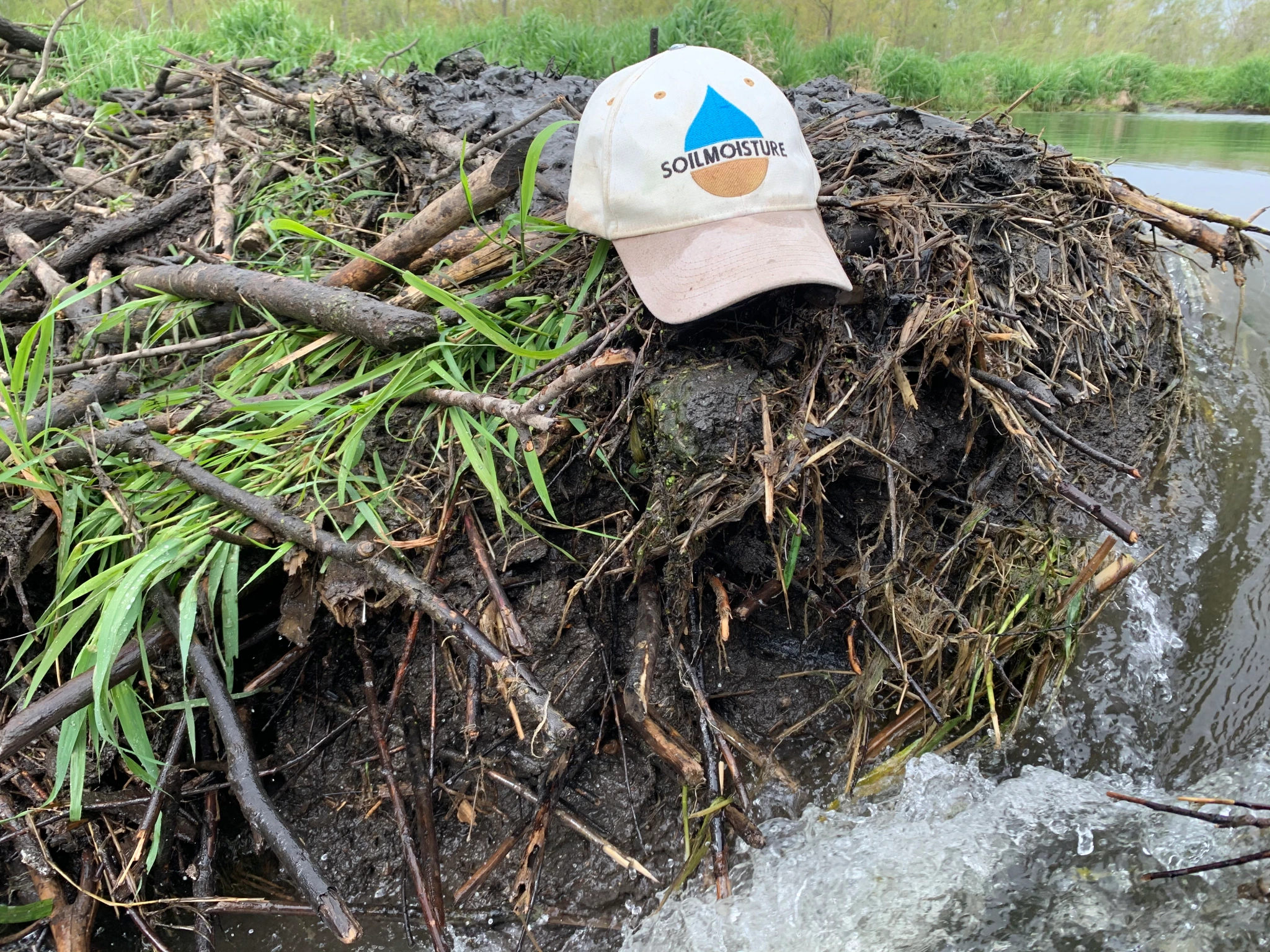
An Iowa Nutrient Research Center-funded study that seeks to quantify beaver dam impacts on water quality, hydrology, and stream morphology (i.e., how dams shape the stream itself) has reached the one-year mark. Although primary goals of the study focus on how dams influence sediment, nitrate, and phosphorus levels in waterways, our time in the field has generated numerous ancillary observations on additional impacts of these unique creatures. Here, we present our “top three surprise beaver dam observations” from year one.
Observation 1: Dams are solid, not porous filters
Many folks refer to these structures as filters, but instead they interact with streams much like human-constructed dams. Dams have minimal porosity and cross sections (Photo 1) reveals an intricate, and not random, matrix of sediment, grass, logs, and other debris (even traffic cones). Rocks as large as 6” across are shuttled to the dam top anchoring the sediment that is packed atop the dam each night. Dams maintain impressive quantities of water, even during drought conditions (Photo 2). As non-pool reaches dried out in summer 2021, the majority of study dams were able to maintain pools all summer. A dam that is 3-5’ tall may have a pool as deep as 7-9’ thanks to the persistent efforts of the pool inhabitants. This storage represents critical refugia for aquatic biota during drought, and not to mention the wood ducks, herons, and other birds that we observed in pools during this low-flow period. In addition, pools allow for maintenance of riparian (streamside) groundwater levels – benefiting critical streambank vegetation.
Observation 2: Stream channel shape influences beaver activity and impact
Beavers in channelized reaches face a number of challenges. Incision (e.g., steep streambanks) means less stream-floodplain connectivity and greater streamflow energy retention in the channel, driving frequent dam breaches and rebuilds. Beavers are cumbersome and vulnerable on land, thus less frequent floodplain inundation means less distance they are comfortable traveling for food. Because of this, beaver dams in channelized stream reaches exhibit feeding pressure confined to a concentrated area, quickly exhausting the woody vegetation. In a scenario with a wider, readily-accessible floodplain (Photo 3), with less incision, beaver will construct lateral canals to access preferred woody species, thus dispersing their impact on the riparian corridor more broadly. A primary dam is constructed on an existing foundational riffle structure, or other stable point, especially when sufficient building materials are in proximity. As building materials (and by proxy, beaver-expended calories) are exhausted near the primary dam, satellite dams will be constructed to provide for additional resource access.
Observation 3: Riparian tree felling patterns are somewhat predictable, somewhat random
Beavers eat wood. Well, technically, they strip the outer and inner bark (including the phloem and cambium), and leave the heartwood (dead xylem, the true definition of wood) alone. Regardless, their tree felling activity can impact intentional riparian conservation efforts aimed at nutrient loss reduction (Photo 4). We are often asked which woody species beavers prefer to feed on, and which they prefer to avoid. A gradient of tree preference is present in the literature, but we’ve observed that distance from the channel often outweighs species preference. As vulnerability to predation may increase with distance from water, we’ve observed lower-palatable species close to banks (even cedar) sampled before they hit more desirable species at greater distances.
At this point, these observations are simply that – observations. Although fascinating sidebars to the overall project goals, each piece provides important clues as we begin to analyze water quality and hydrology data, and work to develop in-stream and riparian management guidance. One of the benefits of studying a dynamic and impactful creature!
Read full article here.